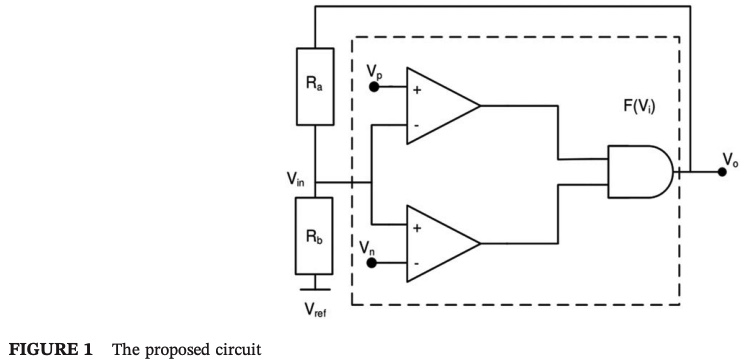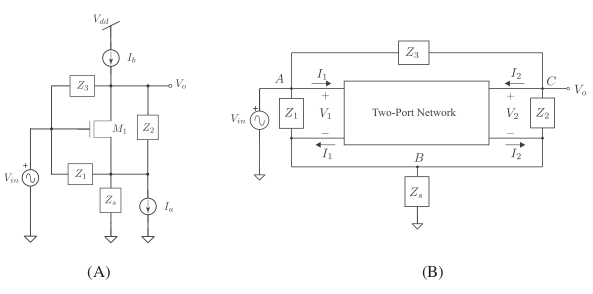FPGA Implementation of X- and Heart-shapes Controllable Multi-Scroll Attractors
This paper proposes new multi-scrolls chaotic systems which is called the X-shape. The purpose is to have more complex systems and flexible ranges of the chaotic behavior. The proposed X-shape is a combination between V-shape and Λ-shape. This paper also represents the Heart-shape which considered a special case of the X-shape. The system complexity has been measured by MLE and compared with V-shape system. It shows lager MLE on the side of X-shape. In addition, the effect of changing system parameters has been discussed and compared with V-shape. Finally, a fully hardware implantation on FPGA
Comparison between three approximation methods on oscillator circuits
The promising capabilities of fractional-order devices challenge researchers to find a way to build it physically. Approximating the Laplacian operator sα can pave the way to emulate the fractional-order devices till its off-the-shelf appearance. This paper introduces three approximations of the Laplacian operator sα: Oustaloup, Matsuda, and Valsa by comparing their behaviors through two types of oscillator circuits. The first two are well-established approximations and the latter is proposed for the first time by converting its model network to an integer polynomial approximation of the
Fractional-Order Relaxation Oscillators Based on Op-Amp and OTRA
This paper introduces closed formulas of two topologies of fractional-order relaxation oscillators. One of these topologies is based on Operational Amplifier (Op-Amp) and the other one depends on Operational Operational Trans-Resistance Amplifier (OTRA). Special cases for each topology are also provided. The advantage of these designs comes from the added extra degree of freedom presented by the fractional-order α. Matsuda's approximation of sα is used to implement fractional-order capacitors. Also, experimental work is included to verify the theoretical results. © 2018 IEEE.
Tunable fractional-order band-pass filter of order 2α
In this work, a novel implementation of a tunable fractional-order bandpass filter of order 2α is proposed. The transfer function of the presented filter is approximated using the second-order Continued Fraction Expansion (CFE) approximation technique. The filter transfer function is realized using the Inverse Follow the Leader Feedback (IFLF) structure. The Operational Transconductance Amplifiers (OTAs) are used to implement the filter circuit. Furthermore, the proposed filter is tunable by varying the value of only one bias current, which adjust the value of α. The simulations are performed

A generalized family of memristor-based voltage controlled relaxation oscillator
Recently, memristive oscillators are a significant topic in the nonlinear circuit theory where there is a possibility to build relaxation oscillators without existence of reactive elements. In this paper, a family of voltage-controlled memristor-based relaxation oscillator including two memristors is presented. The operation of two memristors-based voltage relaxation oscillator circuits is demonstrated theoretically with the mathematical analysis and with numerical simulations. The generalized expressions for the oscillation frequency and conditions are derived for different cases, where a
Full implementation of a capacitance-to-digital converter system based on SAR logic and charge redistribution technique
This paper demonstrates a low power 6-bit single-ended voltage-based Capacitance-to-Digital Converter (CDC) circuit based on a charge redistribution technique and Successive Approximation Register (SAR) logic operating at 370 kHz sampling rate. A proposed realization of a SAR logic control unit integrated with a low power comparator is introduced where the system blocks are entirely built on the transistor level. The system, which is fully automated with a universal clock signal, is tested for real time Cadence simulations using a 130nm model from which static and dynamic parameters are
Single transistor fractional-order filter using a multi-walled carbon nanotube device
A low-pass fractional-order filter topology based on a single metal oxide semiconductor transistor is presented in this Letter. The filter is realized using a fractional-order capacitor fabricated using multi-walled carbon nanotubes. The electronic tuning capability of the filter’s frequency characteristics is achieved through a biasing current source. Experimental results are presented and compared with the theory. © 2019, Springer Science+Business Media, LLC, part of Springer Nature.
Fractional order Chebyshev-like low-pass filters based on integer order poles
Chebyshev filter is one of the most commonly used prototype filters that approximate the ideal magnitude response. In this paper, a simple and fast approach to create fractional order Chebyshev-like filter using its integer order poles is discussed. The transfer functions for the fractional filters are developed using the integer order poles from the traditional filter. This approach makes this work the first to generate fractional order transfer functions knowing their poles. The magnitude, phase, step responses, and group delay are simulated for different fractional orders showing their

Single transistor RC-only second-order allpass filters
In this letter, all possible single transistor RC-only second-order allpass filters obtainable from a four impedance common-source topology are reported. It is shown that there are only seven such filters with only one of them being a minimum component canonical 2R-2C filter. Two of the found filters are designed and simulated in a 65-nm CMOS process. © 2019 John Wiley & Sons, Ltd.
Fractional-order Nonminimum-phase Filter Design
This paper introduces the design procedure of the fractional-order Soliman Nonminimum-phase filter. Theoretical analysis has been carried out providing the critical frequencies of the filter. The effect of fractional-order parameter \alpha on the filter response has been investigated. Additionally, two different approximation techniques (Oustaloup and Matsuda) have been employed to realize the filter. A comparison is held between the exact and approximated solutions. Theoretical analysis is verified through circuit simulations and experimental work. © 2019 IEEE.
Pagination
- Previous page ‹‹
- Page 34
- Next page ››
